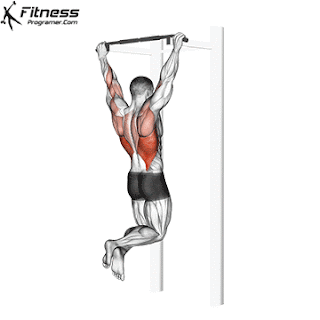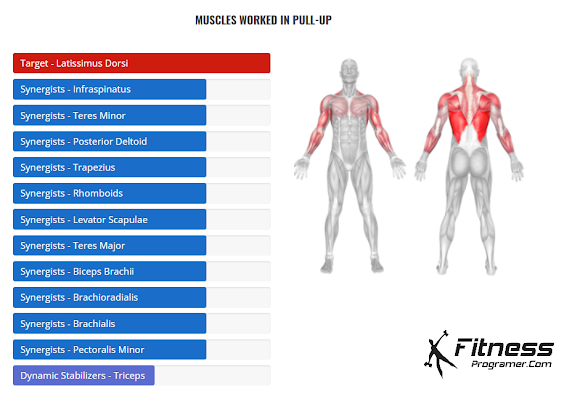The pull-up is a bodyweight compound exercise. This compound exercise works the entire upper body as a whole and strengthens nearly every muscles at the same time. A standard pull-up involves gripping an overhead bar and using your body strength to raise your body until your chin is above the bar. The exact level of muscular tension each muscle group undergoes while performing this movement depends on a variety of factors, such as grip position and the angle at which your torso is.
Before you can understand why pull-ups are so important, it helps to get a sense for the specific muscles this movement targets and how the unique motion of the pull-up works several areas at the same time.
How to do a Pull-up
The pull-up is a closed kinetic chain type movement primarily focused on the back muscles and the pull-muscles of your arms.
In the pull-up exercise, the most activation comes from the eccentric part of the movement as you lower yourself to the ground, not from the concentric part where you lift yourself up. Thus, in order to accrue the most muscular activation, it is best to lower yourself more slowly than that of the speed at which you performed the concentric portion of the movement.
What Muscles Does the Pull-up Work?
The muscles primarily worked by the pull-up exercise are the latissimus dorsi or “lats”, the trapezius or “traps” as well as the biceps brachii, with a particular focus on the inner head of the biceps muscle group.
As stabilizers, the abdominal group of muscles including the obliques are also activated, with the erector spinae (in particular the thoracic portion) also acting as a stabilizer muscle group.
Also included are the accessory muscles of your brachioradialis along the top of your forearm, the deltoid or shoulder muscle group and the upper portion of the pectoral muscles.





